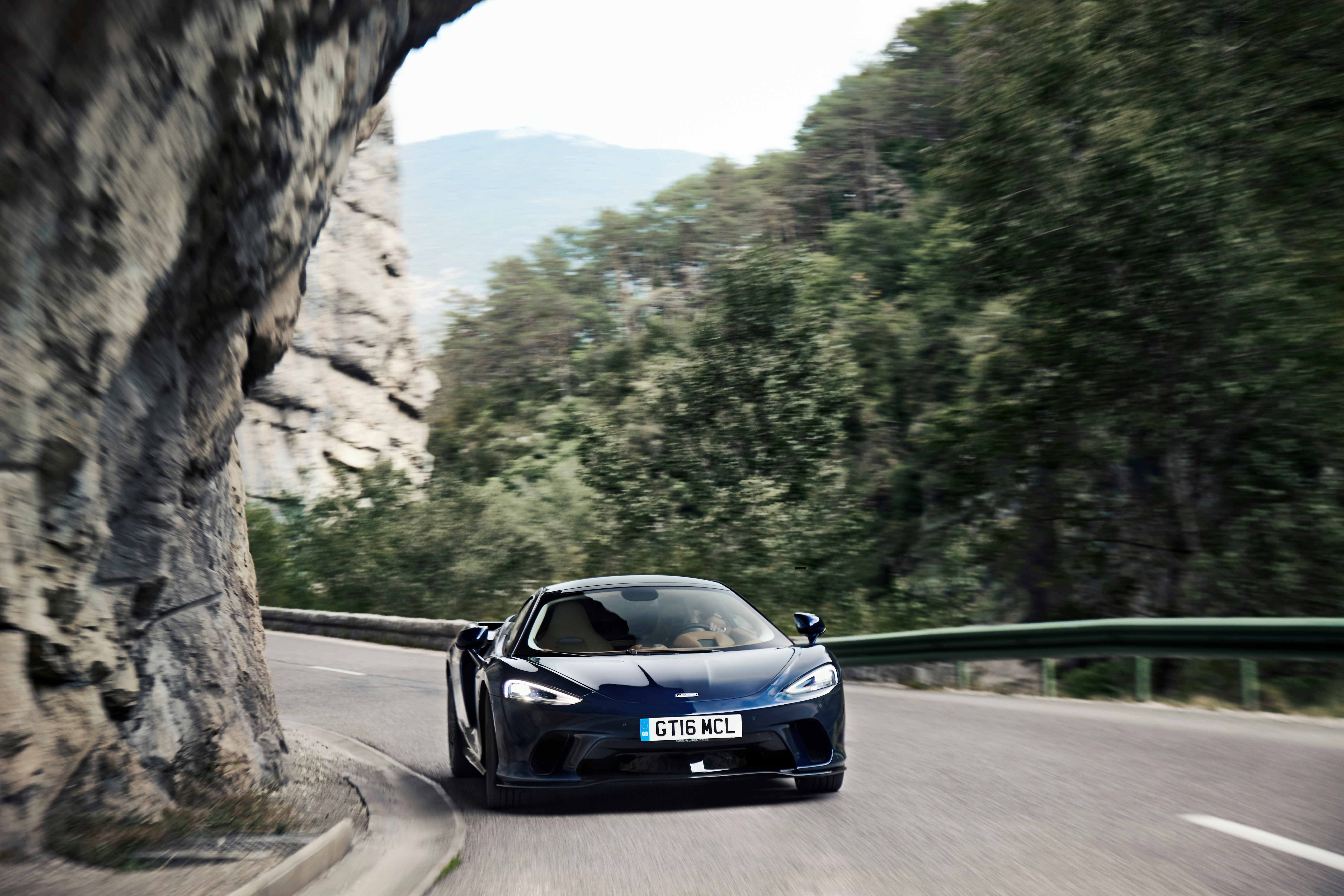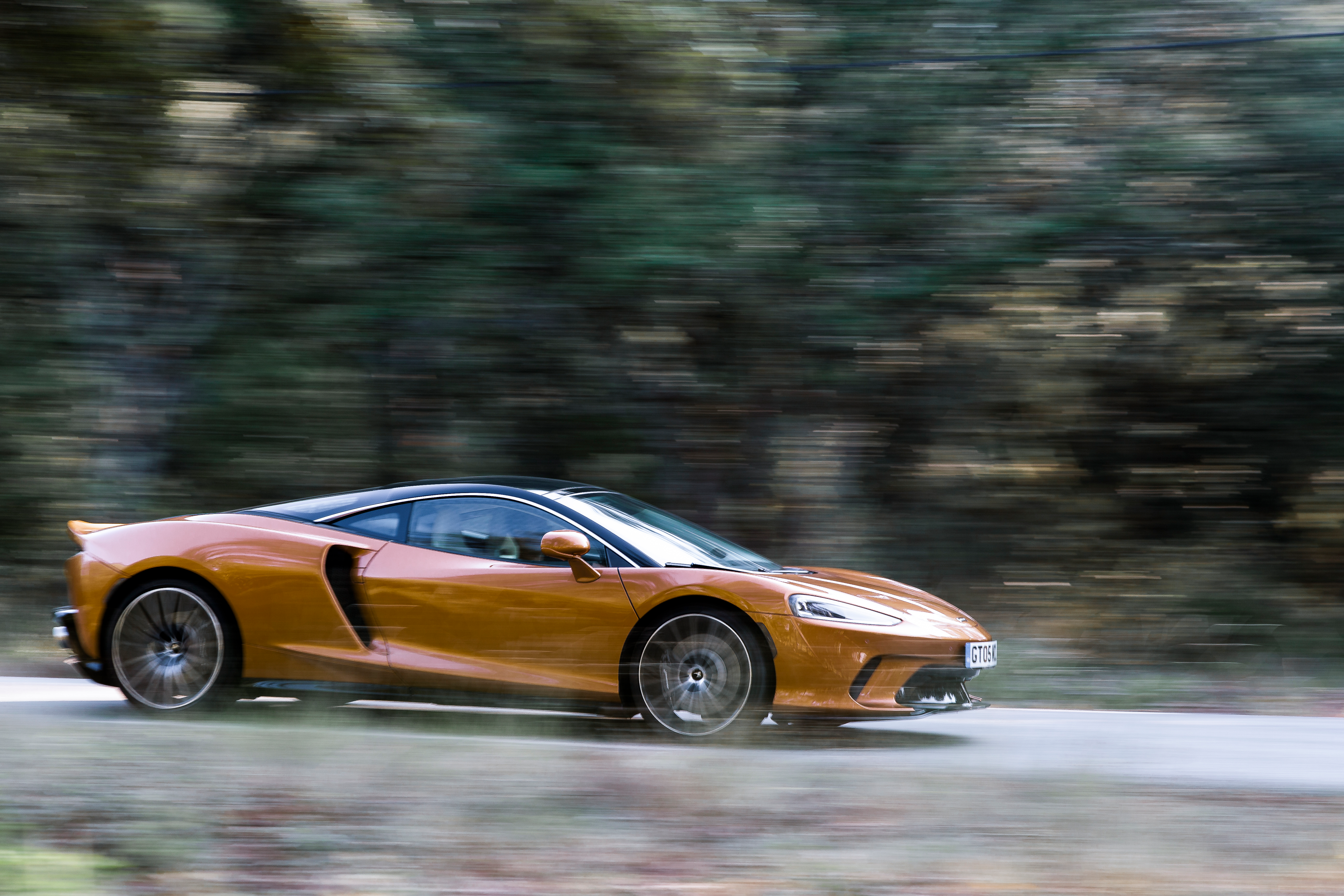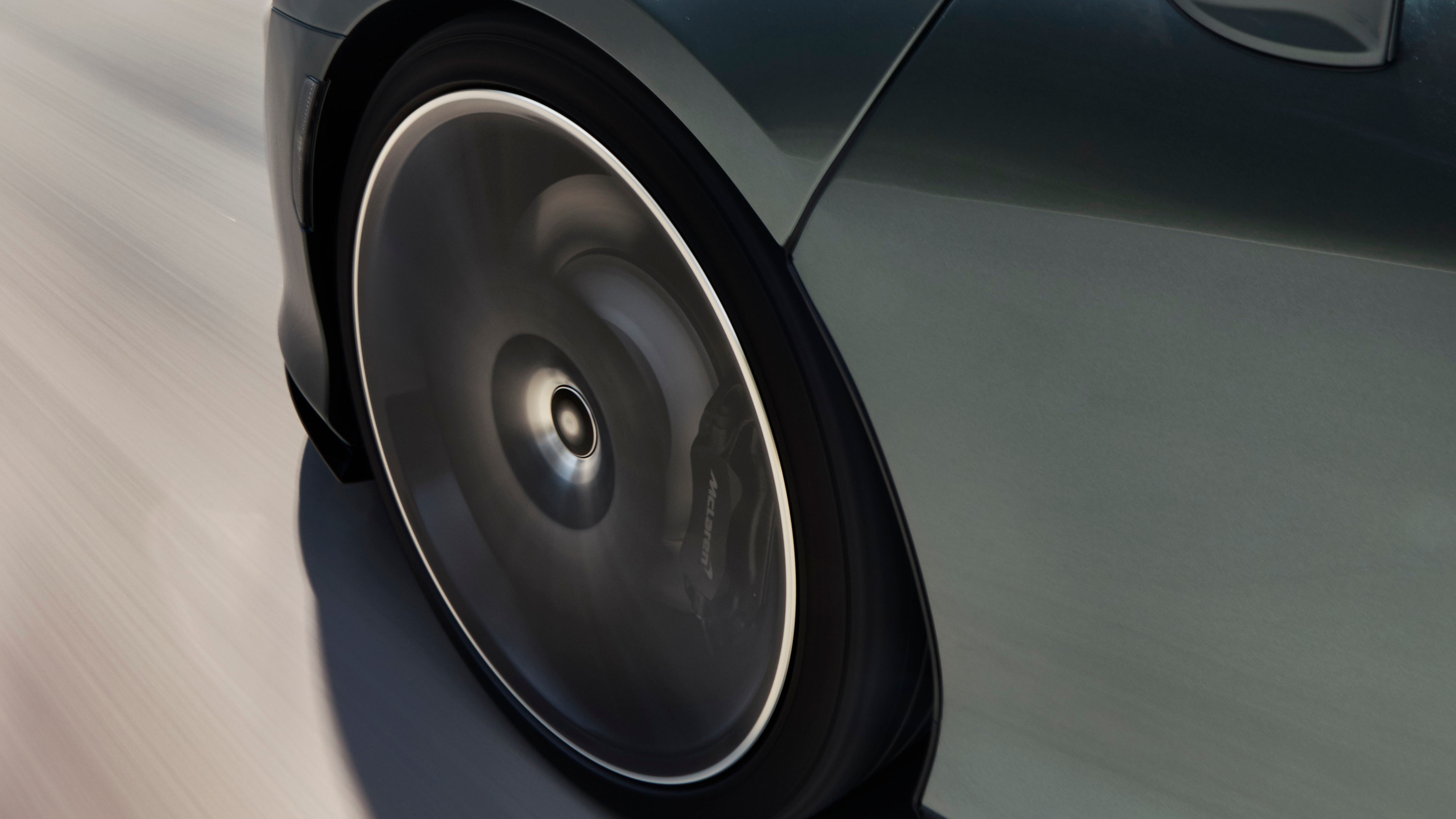The McLaren GT's Suspension Predicts The Future To Give You A Glossy Smooth Ride
The 2020 McLaren GT is a showcase of impressive automotive technology, one of the most immediately-appreciable of which is its "proactive" suspension setup that effectively predicts road conditions. In the 720S, this tech is used to maximize grip. Here, it's dialed-in for comfort.
When McLaren invited me to drive its GT around the south of France I, of course, immediately began to ponder all of the technical challenges surrounding the development of a supercar that is not only track-ready but easy and comfortable to drive.
(Full Disclosure: McLaren flew me to the south of France; gave me a helicopter ride into St. Tropez and provided food and beverage of exquisite varieties.)
Nah, I'm lying. I started a chart to figure out just how much bread I could eat before turning into a carb blimp and rolling away into the French Rivera like a rogue Macy's Thanksgiving Day Parade balloon. But it is an interesting challenge nonetheless, one that McLaren was uniquely prepared for with what the company calls "Proactive Damping Control."

McLaren GT Chief Engineer Adam Thomson did his best to explain it to me. And while he tried to not make it seem like the McLaren was making decisions or predictions, they did put "learning intelligence" into the presentation deck, so let's get into this seemingly psychic, semi-sentient(?) vehicle!
The GT's suspension architecture is a double-wishbone design, made from aluminum, connected to hydraulic dampers and "an array of sensors and a powerful control unit," according to the press release. These elements work together to effectively "'read' the road ahead, interpreting what is likely to happen next and reacting predictively in just two milliseconds."
Here's how it works: as the car's wheels roll along the road, they're reacting to inputs—bumps, holes—from the road as well as reacting to inputs from the driver. For example, when the driver brakes, the car pitches downwards and the tire inevitably moves up. Three factors—acceleration, force, and displacement—all come into play in the car's relationships with its wheels.
What McLaren's traditional (reactive) damping system does is "look at" what is happening to the car and then it adjusts its damping rate, which is resistance to acceleration, accordingly. It basically helps the car stay stable and gives a smoother ride.
"So the wheel hits a bump, it goes up and the system says 'ah-ha, I have a bump here, I'm going to increase the damping rate to work against that force,'" Thomson explained.

Other car companies have similar reactive damping systems, which can even use GPS and camera information to make adjustments to the car's ride. McLaren's system, developed for its Super Series and first launched in the 720S, seems to be more sophisticated. Instead of generating a reaction after a few milliseconds of input like a traditional dampening system, McLaren's Proactive Damping digests all the inputs it receives for a longer period of time, about a half-second, and then uses that information to make predictive adjustments to the ride based on what it experienced before.
"Rather than reacting to what the wheel is doing, it's predicting where the car should be," Thomson said.
So unlike the C8 Corvette, which allows the driver to program as many as 1,000 locations into the car's computer, allowing the suspension to automatically lift the front of the car based on its GPS location, the McLaren looks at what is statistically likely to happen next. If you're on a rough road, for instance, the Mclaren's system takes a "long," but still incredibly brief, snapshot of how the wheels are reacting to the road. That way, as soon as the car pitches down, the system can theoretically correct for the road condition earlier than a traditional reactive dampening system, as it has a rough idea of how deep or large the holes are on that stretch of driving. The reactive dampening system can only act on what's happening in that instant, and not on what might be coming up, creating a lag.
To see this system in action, we took to the winding mountain roads in the south of France (don't worry, a full review of the car is on its way.) The car provided an incredibly smooth ride through all the little speed bumps and sudden stops that you experience navigating everything from mountainous national parks to small alpine towns to large, tourist-clogged cities. The entire ride is focused on providing buttery comfort for the driver, while still supplying a nice deep turbocharged V8 soundtrack.

McLaren's math suggests that while a traditional damping system can take from 20 to 40 milliseconds to react to the road, the Proactive system takes only two milliseconds.
The 720S actually introduced Proactive Damping Control as it's seen here, but Thomson told me that the GT uses the system in a very different way. The 720 uses condition inputs, plus information from the hydraulic roll control, to maximize tire contact on the road to enhance the grip and performance of the car. McLaren used the architecture and software for the GT, not to maximize grip on the road, but to make the ride as cloud-like and comfortable as possible.
"If you take a blender and put a bunch of different ingredients in it, one of them makes soup and the other makes a smoothie," Thomson said. "The tool is the same, but the ingredients you give it gives you a different result."
And a smoothie is what McLaren has here. The comfort and ease of driving the Mclaren GT was remarkable. It's a high-performance sports car that cruises along along in absolute comfort. After spending hours in a 612-HP missile, you expect to be a little raw. But really, it was a simultaneously smooth and thrilling car to drive. One I would have gladly spent many more hours driving. Let's hope the GT remembers my kind words when it eventually gains sentience in the upcoming AI uprising.
